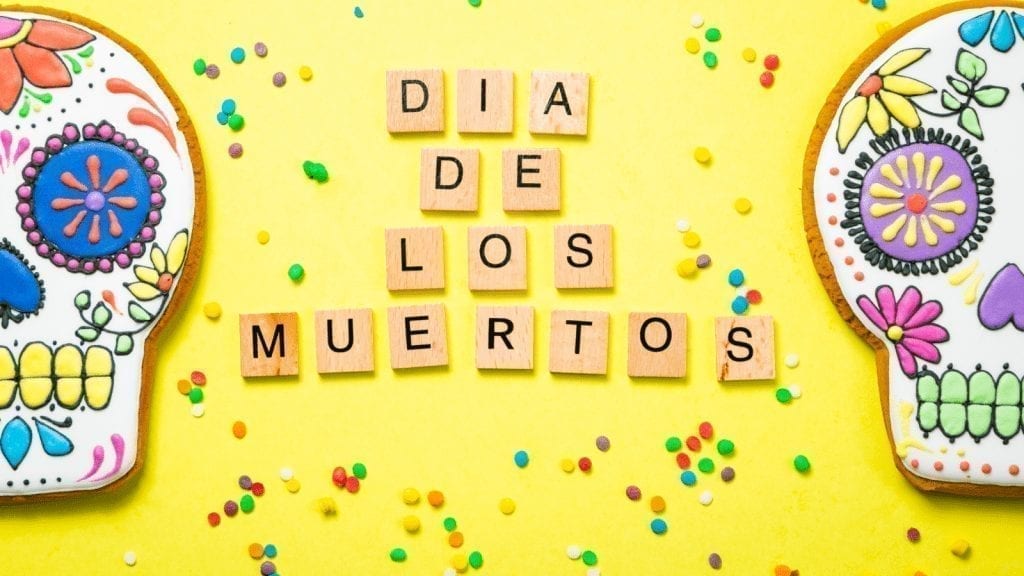
Día de los Muertos – Day of the Dead
Living in the United States, fall has always been my favorite season. The heat is fading, but the cold hasn’t quite set in yet… the weather is perfect! But the real reason I love fall so much? Dia de los Muertos! Because it falls so close to October 31, people often assume that it is related to Halloween, but this isn’t the case! Halloween is associated with scary things, but Dia de los Muertos is about honoring the memories of our loved ones who have passed.
Though Dia de los Muertos originated during the time of the Aztecs in Mexico, its traditions have spread throughout much of Latin America.
On November 1st and 2nd of every year, it’s believed that a veil lifts between the worlds of the living and the dead so that our deceased loved ones can come back to visit us. On November 1st, our lost children – angelitos or “little angels” – visit us, and then on November 2nd, the adults come. Let’s take a look at some of the things we do to honor all of them!
6 Ways to Celebrate Día de los Muertos
- Create ofrendas – or altars. We build small altars in our homes to honor those who have passed. We decorate with papel picado, flowers, and candles. Photos of the person are placed on the altar along with food offerings. In our home, we include skeletons to represent a carpenter, a train engineer, an artist, and an abuelita. As sad as I was to lose my grandmother, I was delighted to find a skeleton that represented her, and I smile every time I see it. These small skeletons represent each person we’re honoring. My grandfather, for example, was a railroad conductor, and my son’s father was a carpenter.

- Traditional food – Oh, the delicious food! I honestly believe that Mexican food is the best in the world, so ANY excuse to cook and eat is a good one. Pan de Muerto is one of my favorites, and we always make tamales too. Not only do we EAT these delicious treats, we place some on the altars or grave sites for visitors to enjoy, too. While they can’t eat it, we believe the delicious aroma is still there for them to enjoy.

- Cémpazuchitl flower. This tough-to-pronounce flower is the simple marigold! The belief is that the strong odor of these lovely, yellow blooms helps guide the spirits to their altars. We decorate the altars with the flower, and we also use the petals to make a path leading to the altars or gravesites.
- Skulls and skeletons. Sugar skulls are now considered a cute design, but they are relics of the Aztec culture. Often used in ceremonies, they were also the trophies of battle. Why are they called sugar skulls? Because they’re traditionally made of sugar! They’re tasty little treats that can be nibbled on or used for decorating the altar. Today, they’re bright and colorful and are made out of many different materials. I have a few in my home year-round, simply because they’re beautiful works of art.
- Visiting grave sites. Many families go out to the cemetery – panteón – to trim any weeds, add flowers, light candles, and leave offerings. It’s a lovely place for a family get-together. We sing, play music, and reminisce. Many families will spend the entire day and/or night there. We usually stay a few hours and then head home to continue the festivities.
- ¡Celebramos! This is not a time for grieving and crying! It’s a time to celebrate life and remember our loved ones who have passed with the same joy and happiness they brought to our lives. I share stories with my son about his father and cook recipes that my abuelita taught me. But most of all, I remember; and memories are a beautiful thing.
About the author

Bilingual Teacher at Bilingual Bridges



